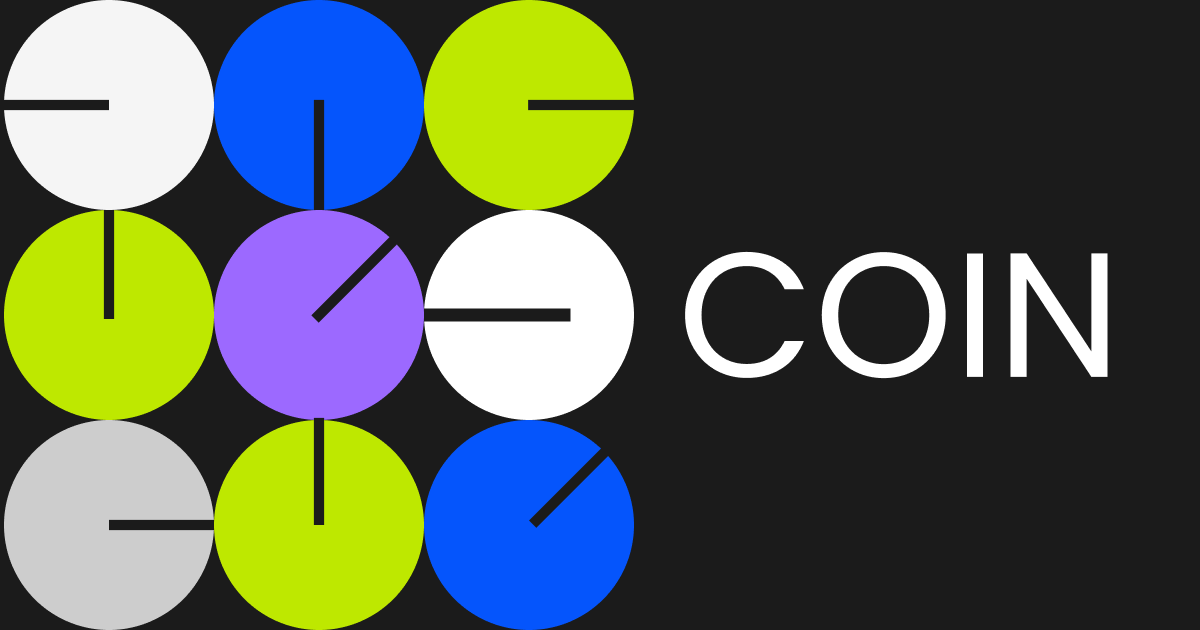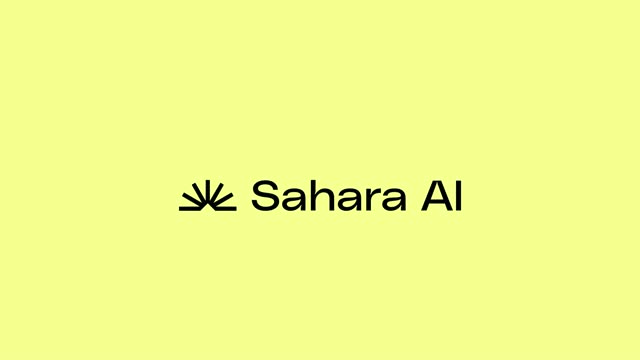Project Overview
Launched on
June 26, 2025, Sahara AI (SAHARA) positions itself as a
decentralized AI blockchain ecosystemdesigned to facilitate a more
open, fair, and collaborative AI economy. At its core, Sahara merges artificial intelligence with on-chain governance, aiming to shift the balance of AI innovation away from tech monopolies and toward community-led, censorship-resistant development.
As the AI revolution accelerates, centralized control over data and compute power remains a major concern. Sahara AI counters this with a decentralized architecture that enables:
-
Distributed compute and storage infrastructure
-
Permissionless deployment of AI models
-
Collaborative model training and improvement via DAO
-
Token incentives for AI creators, trainers, and validators
Sahara’s vision aligns closely with the ethos of Web3 — where data sovereignty, composability, and transparent value flows are paramount. Its architecture is modular, with support for AI agents, secure data sharing, and privacy-preserving collaboration, potentially unlocking use cases across industries ranging from finance and medicine to gaming and education.
Project Categories
Sahara AI spans multiple high-growth sectors within both crypto and AI:
Decentralized Artificial Intelligence: At its core, Sahara functions as a
decentralized AI protocol, allowing the deployment and management of machine learning models on-chain. The platform offers incentives for model training, usage, and verification — promoting a new era of AI democratization.
Data Exchange & Federated Learning: Sahara enables
secure data sharing across nodes without compromising user privacy. This opens up applications in
federated learning, allowing multiple entities to train AI models collaboratively without centralizing their data.
Web3 Infrastructure & Middleware: Through its blockchain-based architecture and AMM-styled incentive design, Sahara doubles as a foundational Web3 infrastructure layer — offering smart contracts, user identity modules, and governance primitives tailored for AI workloads.
AI DAO Governance: The governance model introduces decentralized decision-making over which models to prioritize, fund, or deprecate. This builds a decentralized “AI council” that empowers stakeholders to direct the evolution of Sahara’s protocol stack and ecosystem.
Tokenized AI Economy: SAHARA tokens act as the
fuel for model usage, training bounties, staking, and governance. Contributors can monetize their datasets or AI models in a token-native economy — establishing a clear alignment between AI builders and network stakeholders.
Market Analysis
Token Metrics (As of July 30, 2025)
-
Token: SAHARA
-
Current Price: ~$0.08376
-
Market Cap: ~$170 million
-
Circulating Supply: ~2.04 billion SAHARA
-
Total Supply: 10.00 billion SAHARA
-
Initial Listing Price: ~$0.1450
-
24h Change: -6.63%
SAHARA’s
highly volatile post-launch performance is typical of new tokens. Following a brief spike to $0.1450 at launch, the price sharply declined to around $0.083, reflecting a 6.63
% correction within 24 hours — likely driven by early profit-taking, low liquidity depth, and speculative trading.
Macro Context
Sahara enters the market during a pivotal moment for both
AI and crypto:
-
The AI sector is booming, driven by generative AI (like GPT and Claude), computer vision, and autonomous agents.
-
Crypto is seeing a resurgence of interest in
modular infrastructure, DePIN (decentralized physical infrastructure), and AI-chain convergence.
-
Regulatory interest in AI governance creates demand for transparent, auditable, and decentralized alternatives — like Sahara.
However, AI + Crypto projects are still highly experimental. Investors are betting more on narrative potential and vision than on active usage — meaning SAHARA will need strong partnerships, user onboarding, and model utility to grow sustainably.
Price Analysis
Launch Pattern
Sahara’s chart mirrors a common pattern for early-stage tokens:
Launch → Spike → Selloff → Flat Base Formation.
-
Opening spike to ~$0.145 (FOMO-driven buying)
-
Rapid selloff to ~$0.10–$0.08 within hours
-
Flat base forming between $0.082 and $0.085 — potential support
If this support holds, and if liquidity incentives drive protocol growth, the price could begin recovering. But without concrete user metrics, the token may stay in accumulation zones or decline further.
Volume & Liquidity Concerns
With a
daily volume under $100K, Sahara faces
low liquidity risk, increasing price slippage for larger trades and vulnerability to manipulation. Improved market maker presence, exchange listings, and token utilities are needed to sustain organic demand.
Short-Term Resistance/Support
A breakout above $0.095 could attract renewed speculative interest, but volume and usage must support any rally.
SAHARA Price Prediction (2025–2030)
Given the novelty of the project and limited historical data, price forecasts are speculative and assume both tech maturity and broader AI + crypto market trends.
| Year |
Price Range (Low–High) |
Key Catalysts |
| 2025 (Q3–Q4) |
$0.06 – $0.20 |
Token liquidity stabilizes, early AI builders onboard, DAO launches |
| 2026 |
$0.12 – $0.35 |
Model marketplace launches, first enterprise AI integrations |
| 2027 |
$0.25 – $0.60 |
DePIN & AI chain boom, higher staking adoption, cross - chain bridge |
| 2028 |
$0.50 – $0.90 |
AI tokenization trend peaks, NFT AI agents + creator royalties |
| 2029 |
$0.40 – $1.20 |
Regulatory acceptance of decentralized AI, RWAs integration |
| 2030 |
$0.80 – $1.80+ |
Full - scale AI economy on - chain, widespread Sahara usage in dApps |
Note: These projections assume that Sahara AI delivers its roadmap milestones, maintains developer traction, and successfully incentivizes AI data/model contributions.
Future Outlook & Risks
Bullish Scenarios
-
Narrative tailwinds: AI + blockchain narrative remains strong, and Sahara is well-positioned to benefit.
-
Token utility: If staking, governance, and AI access create real token demand, SAHARA can become a core asset in the AI-DeFi intersection.
-
Decentralized model marketplace: Once Sahara enables monetization of AI models through smart contracts, value accrual to SAHARA tokens could accelerate.
Risks
-
Hype dilution: Many AI-crypto projects are launching; differentiation is critical.
-
Low user activity: Without model developers and consumers, the platform remains speculative.
-
Tokenomics imbalance: If emissions are too aggressive or utility too weak, inflation could suppress price.
-
Centralized model fallback: Despite the vision, hosting powerful AI models on-chain is technically hard. Projects may default to using centralized APIs like OpenAI’s, weakening decentralization claims.
Conclusion
Sahara AI is an ambitious project aiming to
decentralize the AI economy — bringing together compute, data, models, and governance under a unified Web3 framework. The project enters space at a time of immense excitement around generative AI and decentralized infrastructure, giving it narrative leverage.
That said,
its success hinges on the adoption — not just among crypto users but also developers, data providers, and AI researchers. As with all early-stage projects, SAHARA's value is speculative, and its price performance will likely be volatile until fundamentals catch up.
Investors should watch closely for:
-
Partnership announcements
-
Model marketplace launch
-
Ecosystem developer growth
-
DAO voting activity and governance adoption
If the team executes well, Sahara could be a long-term player in the convergence of AI and blockchain.
Project Overview
CoinCatch Team
Disclaimer:
Digital asset prices carry high market risk and price volatility. You should carefully consider your investment experience, financial situation, investment objectives, and risk tolerance. CoinCatch is not responsible for any losses that may occur. This article should not be considered financial advice.


